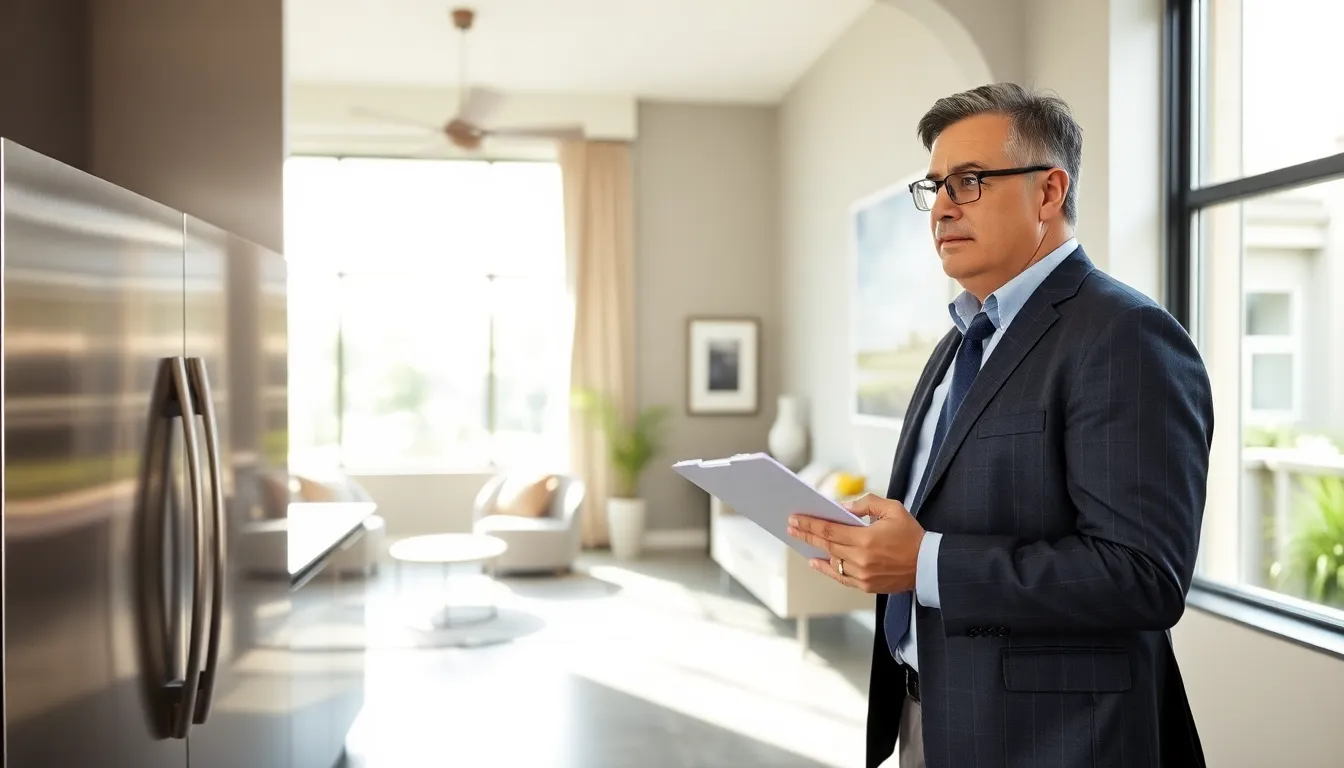Ever wondered who keeps your dream house from becoming a nightmare? Enter the housing inspector, the unsung hero of the real estate world. They sift through the cracks, creaks, and unseen problems in a home, ensuring everything is up to snuff. Whether you’re buying, selling, or just keeping tabs on your property, knowing what housing inspectors do can save you a heap of trouble. Let’s jump into the intriguing realm of housing inspection, where a flashlight and a keen eye can make all the difference.
What Is a Housing Inspector?

A housing inspector is a licensed professional responsible for evaluating the condition of residential properties. They conduct thorough assessments covering everything from structural integrity to safety standards. Think of them as a detective for your home, sniffing out issues before they turn into costly repairs. Whether it’s checking the roof for leaks or ensuring that electrical systems are up to code, housing inspectors play a pivotal role in maintaining safe living environments. In a nutshell, they’re the watchdogs ensuring your home sweet home meets all necessary standards.
Key Responsibilities of a Housing Inspector
Housing inspectors wear many hats, and their daily responsibilities are quite varied:
- Conducting Property Evaluations: They examine homes to identify any potential concerns or violations.
- Reporting Findings: Inspectors must write detailed reports outlining the condition of the property, including any issues found.
- Regulatory Compliance: They ensure that properties adhere to local, state, and federal building codes.
- Advising Homeowners: Often, inspectors provide guidance on necessary repairs or improvements needed for compliance.
- Continuous Education: The world of building codes and regulations is ever-changing, so inspectors must stay updated through regular training.
These responsibilities not only require a keen eye for detail but also a strong knowledge base in building standards and practices.
The Importance of Housing Inspections
Why should anyone care about housing inspections? For starters, they prevent unpleasant surprises. No one wants to discover a leaky roof or faulty wiring after closing the deal. In fact, housing inspections can save buyers thousands by identifying issues before they become major problems. Also, having a documented inspection history may enhance a property’s market value, making it more appealing to prospective buyers.
Also, inspections contribute to safer living conditions. Without them, someone might unknowingly purchase a home that’s structurally unsound or a health hazard. So, beyond the dollars and cents, housing inspections are about peace of mind.
How to Become a Housing Inspector
Becoming a housing inspector doesn’t happen overnight, but it’s a rewarding career path. Here are the steps typically involved:
- Education: Most housing inspectors have at least a high school diploma, but many pursue further education in construction, engineering, or a related field.
- Training Programs: Aspiring inspectors often enroll in accredited training programs that cover inspection techniques and local building codes.
- Certification: After completing training, candidates must pass a certification exam. This often varies by state, so it’s critical to check local requirements.
- Experience: Gaining on-the-job experience, often under the guidance of a seasoned inspector, is invaluable. Many candidates start in related roles such as construction or maintenance.
- Continuing Education: As mentioned earlier, staying current with changes in laws and building codes is essential for credibility and effectiveness.
With dedication and the right qualifications, anyone can embark on a fulfilling career as a housing inspector.
Tools and Techniques Used by Housing Inspectors
To do their job effectively, housing inspectors rely on a variety of tools and techniques. A few essentials include:
- Flashlights: Essential for inspecting dark spaces such as attics and crawl spaces.
- Moisture Meters: These help identify water damage or leaks.
- Infrared Cameras: A more advanced tool that detects heat patterns, revealing potential electrical issues or insulation problems.
- Ladders: Inspectors often need to access roofs or high areas, making sturdy ladders a must.
- Checklists: Organized checklists ensure that no aspect of the property is overlooked during an inspection.
Besides, inspectors often enhance their inspections by utilizing digital report-writing software, simplifying the documentation process and making reports easier to understand.
Common Issues Found During Housing Inspections
During an inspection, several recurring issues typically arise:
- Roof Damage: Missing shingles, leaks, and improper installation are common concerns.
- Electrical Problems: Outdated wiring, inadequate outlets, or unsafe circuit breakers can flag serious safety risks.
- Plumbing Leaks: Inspectors often come across leaking pipes or faulty drainage systems.
- Structural Concerns: Issues like cracked foundations or improperly installed support beams can threaten a home’s integrity.
- Pest Infestations: Signs of termites, rodents, or other pests can be detrimental to home value.
By identifying these issues during an inspection, inspectors enable homeowners to address problems effectively and maintain their homes’ value.






